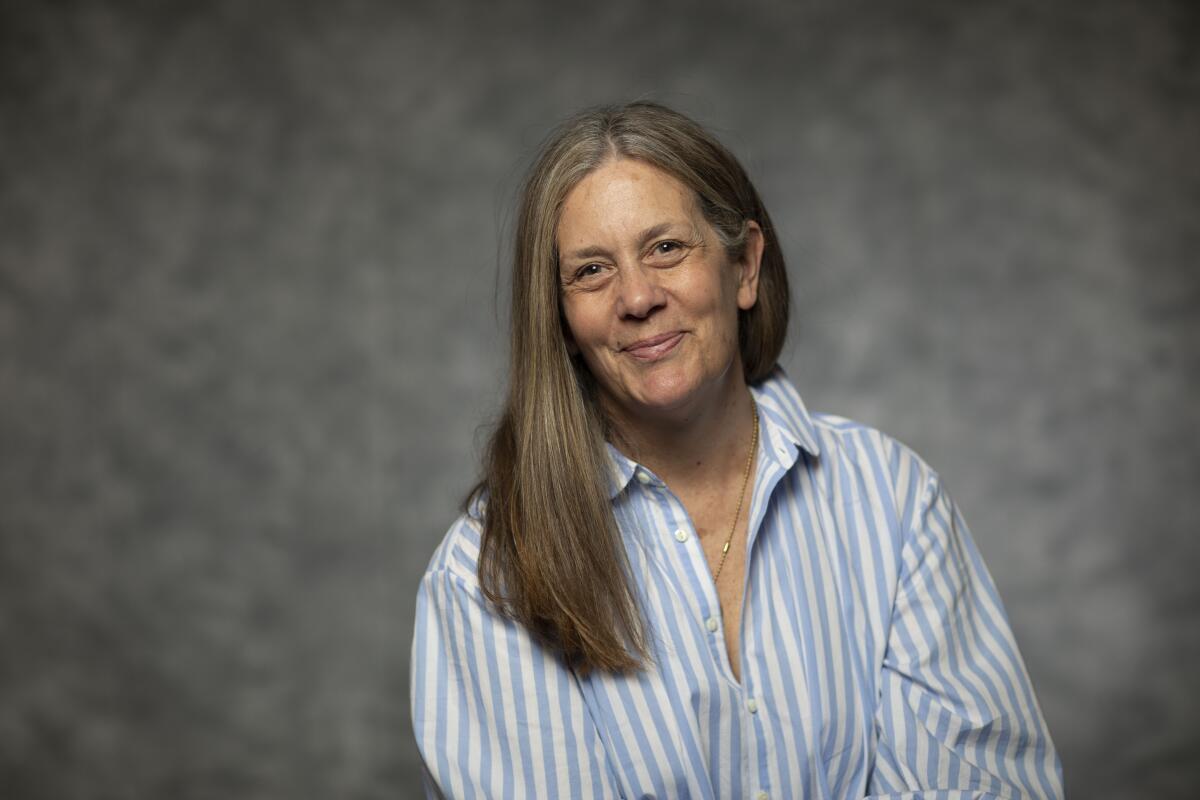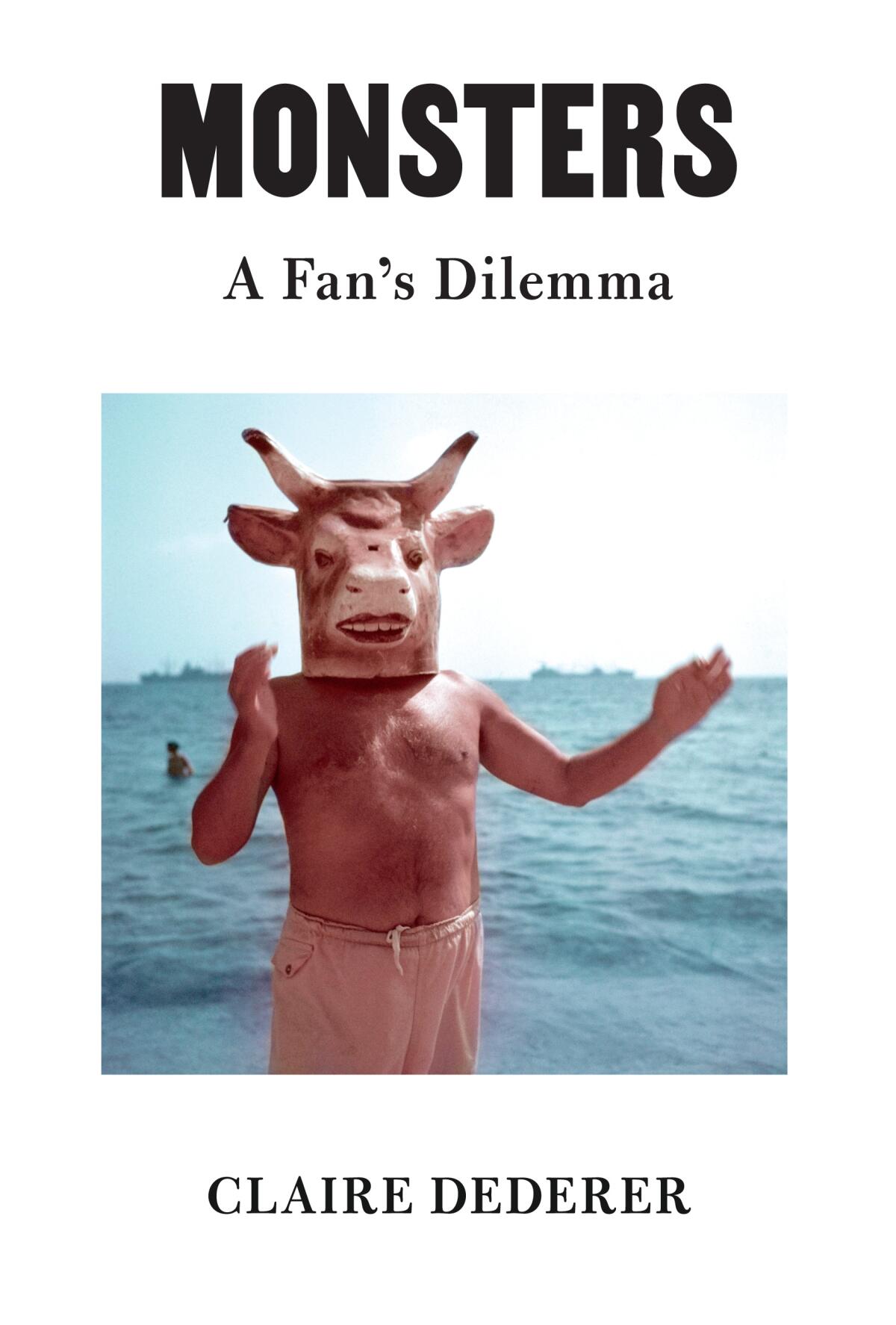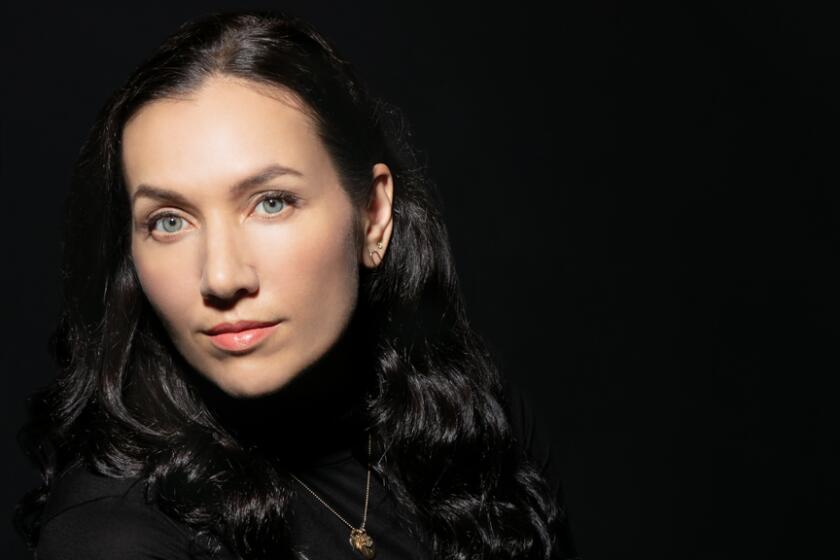Our monsters, ourselves: Claire Dederer explains her sympathy for fans of the canceled

- Share via
On the Shelf
Monsters: A Fan's Dilemma
By Claire Dederer
Knopf: 288 pages, $28
If you buy books linked on our site, The Times may earn a commission from Bookshop.org, whose fees support independent bookstores.
When I saw the cover of essayist Claire Dederer’s new book, “Monsters: A Fan’s Dilemma,” with a photograph of Picasso wearing a bull’s head on the beach, I knew this would be an exciting read. Given that it expands on an essay Dederer wrote for the Paris Review, “What Do We Do With the Art of Monstrous Men?” I expected the book would cover the well-charted exploits of horrible males: Picasso, Hemingway, Polanski. But I was shaken to my core when Dederer also included Sylvia Plath, Valerie Solanas, Doris Lessing and Anne Sexton.
By defining what makes these women monsters, Dederer reveals a devastating truth about the laws of our society and women’s creative work. She even turns the magnifying glass on herself, as a writer and a mother, and approaches the audience as monsters too. She is a careful writer, weighing every sentence, and in our conversation over the phone — which has been edited for length and clarity — she was warm and generous in discussing motherhood, art, memoir, recovery, the impossibility of ethical consumption and how we are truly all monsters.
Forty years ago, a 13-year-old girl clutched a heart charm her friend gave her as a prosecutor made her describe in explicit detail to a grand jury her alleged rape by director Roman Polanski.
To my surprise, you wrote a great deal about motherhood and specifically mothers who are artists. How did you come to this in the writing process?
As a memoirist, I’m really interested in self-indictment and figuring out where I fit in terms of the story, in terms of my culpability. Once I started writing on this topic, it was natural for me to write about my own feelings, on my own needs. I was seeking the interior experience of the mother artist, and it can feel like what you’re doing is not OK.
You write that in her therapy tapes Anne Sexton said, “Writing is as important to me as my children,” but that when you tried to say that, it made you sick. Why?
I think my perception of my own safety in the world has to do with being a person who puts her children first. I’m not saying that is right or sane, but for me it’s the pressure of being the angel of the house. I experienced those pressures as absolute. It’s almost binary in my brain.
I’m thinking most of this line from the book: “If the male crime is rape, the female crime is the failure to nurture. The abandonment of children is the worst thing a woman can do.”
When you are a mother and a writer, you are really entering a maze and the walls are really high and the direction you’re traveling toward is oppression. Being on this preordained path led to my feeling of choosing motherhood.
In ‘The Baby on the Fire Escape: Creativity, Motherhood, and the Mind-Baby Problem,’ Julie Phillips looks to 20th century artist-mothers for answers.
There’s a chapter on Plath and Solanas, and how their biographies cannot be separated from their work. But Ernest Hemingway — he’s a writer students don’t approach with the knowledge of his suicide right off the bat. Does it stain his writing in the same way?
That’s a really interesting point of conversation across the book. I hadn’t thought of comparing those two, but I think you’re absolutely right. What is it about the female suicide that we see differently? A friend said, “I’m reading a book by that woman who walked into the river with the stones in her pocket,” and that’s how he described reading a book by Virginia Woolf!

Is there any difference between the enjoyment of art made by monsters and the celebration of it? What do you think of Adèle Haenel and Céline Sciamma walking out of the Cesars in 2020 when Roman Polanski won an award for best director, with Haenel yelling, “Bravo, pedophilia!”
I think there’s a false dichotomy — that we pretend the life of the artist doesn’t matter, or on the other end, that the biography and the art are the same thing. If the art is separate, you’d venerate Polanski. On the other hand, you’d say we can never even show Polanski’s work. Consuming but not institutionally rewarding is possible. We do it all the time. If we have these rules, that seems like a good solution to the problem, but these rules don’t work out well for queer people, women, and it doesn’t serve people.
Did you see “Tár”?
I did. Oh no, I don’t have anything prepared to say about Tár! I heard Will Menaker talking about the film as a fantasy of being canceled — because you don’t have to work anymore. One of the premises of “Monsters” is that we’re all trapped inside biography and there’s a way in which you escape the responsibility of the self, this persona ... so it’s freeing in a way. That’s a very AA idea, you’re only as sick as your secrets. Cancellation allows you to live your life freely.
Raymond Carver is one of your “beloveds” — an artist whose work has made a big impression on you, in that he was a “monster” who recovered (from alcoholism). Can you say more about the artist who “recovers”?
Again, this comes from my own journey with alcoholism. Quitting drinking made me acknowledge that I had to face something in my own behavior.
‘Biography of X,’ Catherine Lacey’s fourth novel, tracks the hidden life of a late artist who left behind a trail of deceptions in an alternate-history U.S.
One of the most difficult things about the #MeToo movement has been when the monster is a person of color. For instance, Michael Jackson, Bill Cosby and your example in the book, Miles Davis.
That’s why it’s so important to not have a cultural figure valorized by one point of view, the idea that we can decide what’s good art, or what’s valuable. My experience of Bill Cosby or R. Kelly is completely different from someone else’s. Part of this goes to the idea of love: You didn’t live with that person’s work like someone else did. When we pooh-pooh the subjective, the love of the fans, we are giving power to people that already have it.
If we’re going to give artists outsize value in society, then we have to integrate these systems of violence that have affected them — racial violence, sexual violence — in Polanski’s case, the Holocaust, the Tate-LaBianca murders ...
This is where the dichotomy comes into the place. Polanski is the man in Western Civ. Everything happened to him.
I’ve started working with this Books to Prisoners group in Seattle. You find books, and you’re trying to match their desires. Oftentimes they want to draw, or learn to crochet, or read fantasy novels. They have these desires [to do things] to make them feel free. You are meeting that need. It’s like barbells for empathy. You very rarely think about their crime. You are thinking about a person in a cell needing something. That experience goes deeply into what I’m thinking about in the book, about what it is to be a monster.
You write from a place of wanting to know the answers, but of course there is no answer. How do you manage doubt and a lack of answers in your writing?
One of the disciplines of the book was poking at every sentence and making sure that it was actually what I thought. Plumbing the truth of the book to myself was a couple of years of work. I was circling the question and looking at it from different angles. The concept of ethical consumption is a red herring. That’s probably the strongest conclusion.
Memoirist Melissa Febos attacks the gender dynamics of the anti-personal-essay crowd in “Body Work: The Radical Power of Personal Narrative.”
There’s no solving the problem, though. One of the difficulties was not capitulating to the reader by offering a bad-faith solution. This is where I resided as a thinker rather than a person who wants to avoid conflict. Melissa Febos has talked about this idea — that her students believe that someone will want to argue with them about their writing. You can’t write for the bad-faith reader. You have to write for the good-faith reader.
Ferri is the owner of Womb House Books and the author, most recently, of “Silent Cities San Francisco.”
More to Read
Sign up for our Book Club newsletter
Get the latest news, events and more from the Los Angeles Times Book Club, and help us get L.A. reading and talking.
You may occasionally receive promotional content from the Los Angeles Times.









